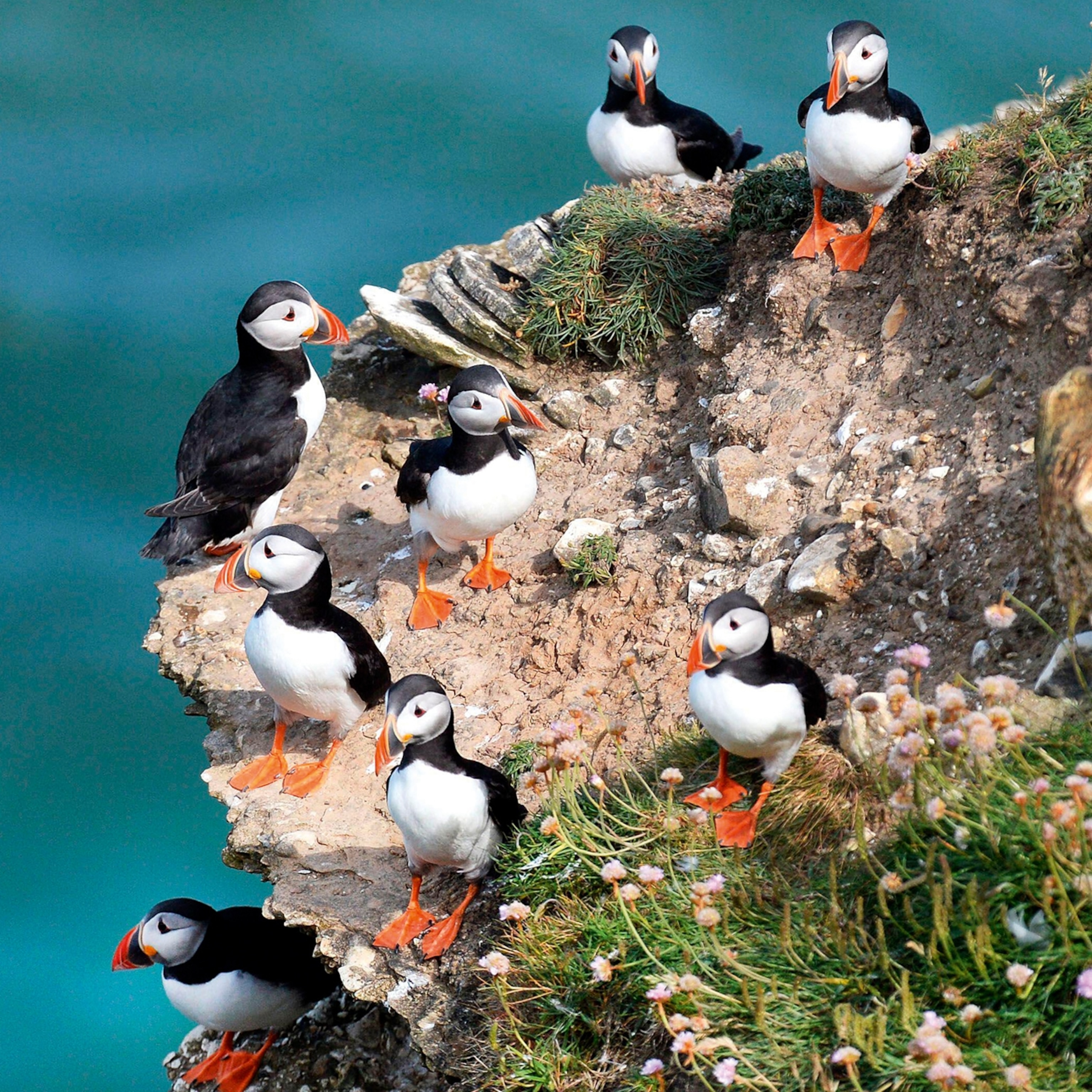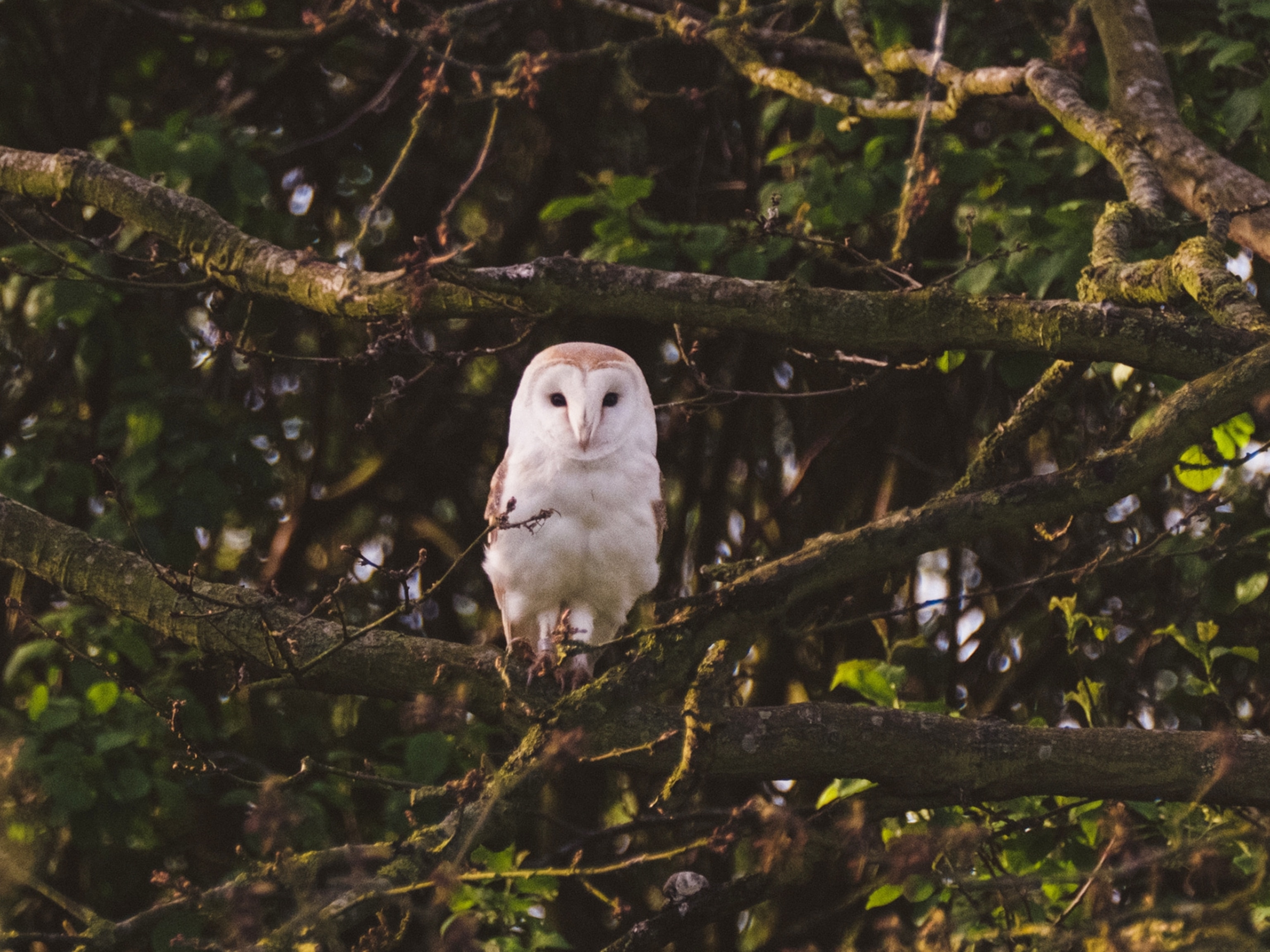
What a Hoot: Snowy Owls Make Rare Southern Appearance
These arctic birds have been spotted in Kansas, North Carolina, and Washington, D.C.
The snowy owl is in town. Bird-watchers, and Harry Potter fans, across the Eastern Seaboard are capturing rare photos of the revered snowy owl, thousands of miles south of its native Arctic home.
According to Kevin McGowan, a biologist and ornithologist at the Cornell Lab of Ornithology, this could be the largest migration of snowy owls to the southeastern U.S. in two decades. (Related article: "Homesick Owls Confusing Airports With Arctic Tundra."
"This is an unprecedented opportunity to understand the owl's migration patterns," said McGowan. "The snowy owl normally lives way the heck up north, which makes it difficult to tag and study them."
McGowan studies the migration patterns of birds, hoping to gain insights into their biology and conservation. He's currently adding his data on bird migrations to a real-time map program called eBird. By recording bird sightings and other biological data, McGowan and other scientists are learning more about snowy owls and their life in the Arctic.
Snow Birds
Here's what scientists know about the migration of snowy owls. The typical winter migration zone for the snowy owl, Bubo scandiacus, is along the southern border of Canada. Irruptions, or sharp increases, of snowy owls in areas outside of southern Canada are usually seen in only a few northern states on the East or West Coast.
An irruption of snowy owls on both the East and West Coasts of the U.S. at the same time is rare. The last continental-wide irruption of the snowy owl was in 2011, when sightings were reported in 31 states and most provinces in Canada. (See eBird's map of the snowy owl sightings in 2011.)
This year, the snowy owl is rumored to have traveled as far south as Bermuda and in an east-to-west arc stretching from Nova Scotia to North Dakota. Additionally, the migrating owls are very young; many of the young birds hatched as recently as last June. (See eBird's map of snowy owl sightings in December 2013.)
Why Are They Here?
Ornithologists aren't entirely sure why snowy owls are traveling this far south. However, they do know one thing for sure: The migration is related to food, specifically the population of lemmings, the owl's dietary staple.
"When lemming populations are low, snowy owls don't breed. Consequently, those are years we don't see these owls in the southern U.S. and Canada," said Denver Holt, biologist and executive director at the Owl Research Institute in Montana.
Holt has been studying a population of snowy owls in Barrow, Alaska, for more than 22 years. He is certain that snowy owl irruptions are related to the fluctuating population of lemmings, a small rodent the size of a hamster. Scientists use irruptions of snowy owls to gauge the population of lemmings and the health of other species in the Arctic. (See video: More on snowy owls and lemmings.)
"When owls have a good breeding year, everything else in the area has a good year. If the owls do well, the lemmings do well; so do the shorebirds, weasels, foxes, et cetera," explained Holt. "When the lemmings are abundant, all the Arctic predators eat lemmings instead of, for example, the eggs of shore-nesting birds. Consequently, there is relaxed predation when lemmings are abundant, and this becomes apparent locally."
The snowy owls will travel back to the tundra in March. Holt recommends that North Americans try to see the birds if they can.
"Bring your families, go out and see them. This type of migration doesn't happen all the time. Take this as an opportunity to learn about lemmings and migrating birds."
Where to Find Snowy Owls
McGowan has been using data from other eBird users to help him find the snowy owl in Ithaca, New York.
"The first time I saw a snowy owl was in 1972. Back then you had to know somebody who knew somebody to get an insider track on the location of these birds. Today it's much easier," said McGowan. He had a few pointers for first-time bird-watchers:
Find open spaces. "What you're looking for is open spaces. These tundra birds fly thousands of miles before they see a tree. They won't sit in them," he said. McGowan recommends looking in open areas, such as airports, agricultural land, and coastal dunes.
Use a map. McGowan helped create eBird, the real-time bird map. "Using the website, you can create a map specific for snowy owls, limit your date range to January 2013, then zoom in on your location to see if there are snowy owls around," he said. According to McGowan, it's a "great tool for geeky birders and first-timers."
Look up. These owls like to sit on objects such as fence posts, hay bales, barns, and telephone poles. "A colleague was driving to the airport and saw one sitting on an exit sign on the interstate. I heard about another snowy owl sitting on a Target building a few weeks ago," said McGowan.
Hundreds of Americans spotted snowy owls over the long weekend. Here are some of the best photos from social media.
Do you have your own snowy owl photos? Share them in our Your Shot community.
Follow Angie McPherson on Twitter.








